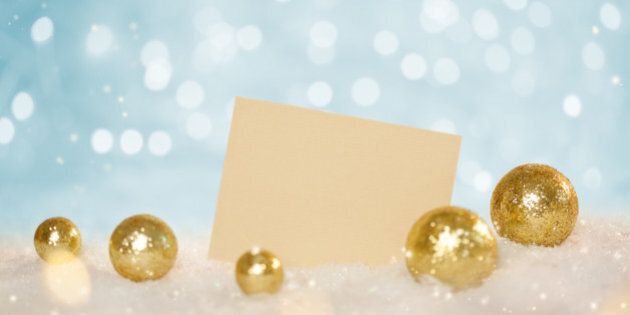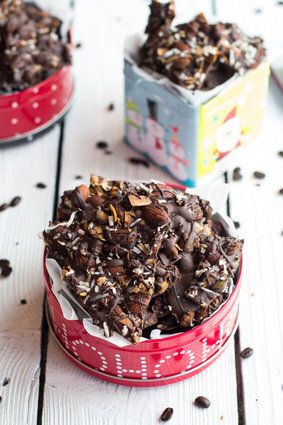
As the Holidays approach, millions of Canadians will once again be sending out greeting cards across the world in the hopes of sharing glad tidings with friends and loved ones alike. Traditionally, a greeting card offers a single message to evoke an emotion that should last for the entire season. Once the pictures are seen and the words read, the job is done and life goes on.
But there may be a way to stretch out the time it takes for a card to deliver its friendly message. Instead of a single moment, a card can offer joy over several days. It's a technological advancement rooted in an unlikely source, microbes. By using certain species of algae, a card can turn into a message-delivering device to offer joy and excitement throughout the Holiday season.
The trick to microbial greeting cards lies in a discovery made back in the 1970s. These organisms make a variety of pigments we commonly use in ink. The formation of these chemicals doesn't happen all the time, however. Instead, changes in the environment and the microbial population size determine whether they appear clear or glow with a spectrum of different hues.
The formation of colour initially was regarded as a perfect way to develop visual biomarkers for environmental changes such as nitrogen concentration in the ocean. However, for one group of researchers at a startup company called Living Ink Technologies, this ability to control the formation of colour led to a more festive idea. They could use the inducible ink to revolutionize the greeting card.
To learn more about algal cards, I reached out to Scott Fulbright. He's the CEO and Co-Founder of Living Ink Technologies. Both he and his partner, Steve Albers, are microbial enthusiasts and want to increase the application of microbes in everyday life. To him, a greeting card can offer more than just a moment of joy. With algae and what he calls "time lapse ink", this gift can leave a person guessing and wanting more.
"Imagine getting a card in the mail with instructions that say, "put the card under a lamp and watch the card "come alive"." On day one, it only says, "Merry" in red ink. On day two, the word "Christmas" appears in green ink". By day three a Christmas tree appears on the card, and on day four "From, Mom and Dad" appears. The cards we have developed leaves people asking, "What will grow next?" We inspire not just the emotion, but the imagination."
Imagination may be the Fulbright's goal but to get to his algal card, he needed to do some significant work in the lab. "It wasn't easy to make the card at first. We had to use a variety of different algae with names such as Nannochloropsis, Chlorella and Haematococcus. Each of these produce their own variety of pigments and from there, we get colour."
As for the sources of these colours, Fulbright reveals most of them are the same chemicals you might find in your refrigerator. "We get forest green from chlorophyll, which is in all leafy vegetables. Orange comes from beta-carotene, which we all know is found in carrots. Then there's lycopene, which everyone seems to rave about. It's red. We also can form yellows, purples, and blues although these chemicals are specific to the algae."
Of course, being able to form pigments is natural for these microbial species. All one needs to do is harvest them and grow them in the lab. But as Fulbright points out, getting the little creatures to follow a set timeline requires some fine tuning of the conditions to be sure they are all synchronized.
"We have to control the rate at which the ink appears to make the card work as uniformly as possible. To do this, we alter the nutrient concentration and the population density. We also ensure the microbes can communicate with one another. In the lab, it's called quorum sensing but it literally means the individual cells act as members of a talking community. When the environment is right, they all send out a message to form pigments. Slowly over time, the ink becomes visible and within a few hours to a day, you have a message. Depending on how many different conditions we place on a card, you could have weeks of enjoyment as each species undergoes quorum sensing at a different time."
The idea of a living card has gained Fulbright and his colleagues some well-deserved attention and they have recently initiated a Kickstarter campaign to deal with the increase in interest and orders. "We need to raise funds to help us finish research and development to refine and manufacture our product. We are designing, refining and need to setup tooling to manufacture special pens that contain Living Ink."
They are also examining other options to make the card even more, well, alive. "We are currently developing a product that combines Living Ink with cards with embedded seeds. During the first week or two, messages from Living Ink grow, and over the following weeks, the seeds within the paper start to sprout. It's like giving a complete garden that will last far longer than the Holidays."
As to how far Fulbright believes the idea of Living Ink could go, he points to some of the work being done in astrobiology. "We are learning more about the potential for life on other planets, like Mars. Some of these algae are perfectly suited for space and might be the first exobiological life forms found. This bodes well for us if we ever happen to get an order from a galaxy far, far away. Not only will it make it but depending on the nature of the recipient, we might even be able to match the ink to the light saber colour."
ALSO ON HUFFPOST:
